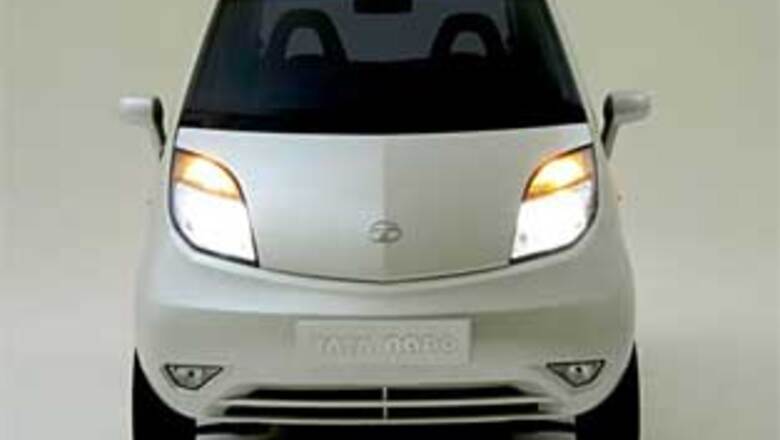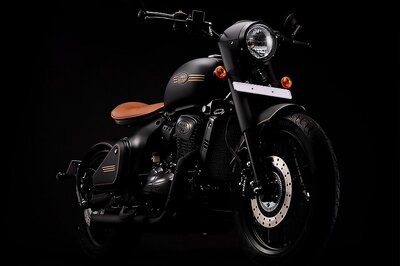
views
So, how exactly did Ratan Tata and his team get the price of the Nano where they wanted it? Before you start screaming cost-cutting, there's more to it than just that. The Nano team scratched their heads, put on their thinking caps and if you're a management type, they even brainstormed. It's no wonder that the Nano and patent applications appear to have gone in hand in hand.
At this moment, a fair amount of information on how the Nano was brought to its intended price tag without compromising its design brief - 'a proper car' - is yet to be announced. But here is what we do know.
1. ECU
The ECU, or engine control unit, is a central part of any modern day motor. It is in effect a small computer that controls all aspects of engine operation. Given the sheer complexity of even the simplest engines, they can be expensive. The complexity is not inherent, it is needed because an engine today must satisfy emissions norms, sound norms, produce an acceptable spread of power, return an acceptable level of economy and still more. This complexity makes it crucial and in the case of the Nano, expensive. However, Tata worked with Bosch to take the ECU down to an unprecedented price. Among the solutions employed, is the fact that the sensors used by the ECU to govern the engine are down to half the usual number. And from what we hear on the Nanos testing in and around Pune, the engine works perfectly.
2. Wiper
Sometimes it's in the details. Ratan Tata's direction to the designers at IDea - to reduce the wiper count to one has been well-publicised. The usual subtext was that it neatened up the car's looks. While true, it's a part of the cost-conscious design that's ensured that careful design ensures lower costs without compromising useability.
3. Small wheels and mounting
The Nano's cuteness is in part due to the tiny wheels it rolls on. These aren't incidental either. The Nano was carefully designed to use these. Small wheels are lighter, which positively impacts economy, performance and ride quality. Further, these wheels were mounted with only three lugs, again, keeping costs in mind while examining and improving decisions that have become automatic in car design. The small wheels and the light weight have also ensured that power steering will probably not be missed in the car - again, this saves cost and complexity. Further, the design team split the tyre sizes to give the front a slightly thinner spec, while keeping the driven wheels fatter. This balances the impact of the wider track at the front, and in driving terms should endow the car with mild understeer at the limit - which is a safety feature. If Tata hadn't planned for the understeer you would probably have got a car like the early Porsches which had a rearward weight bias that resulted in their famously snap oversteer characteristics. In simpler terms, the Nano has a rearward weight bias due to the engine. This, on its own, can be a problem when taking corners at speed, where the rear end starts to behave sort of like a pendulum, dragging the car off the line. The engineered understeer counteracts this and should produce, depending on how good the design is, a balanced, neutral car. And lest we forget, smaller tyres mean less rubber, so they should be cheaper as well.
And don't forget the non-opening hatch. That means no costs in terms of beading, hinges and locks, and that the whole panel can be a relatively cheap addition to the monocoque which will add to the strength of the chassis without adding cost.
4. Light body
The extremely light body weight indications suggest that Tata found some sort of format that allows the upper monocoque to remain pretty light without compromising the chassis rigidity. What is already known is that the Nano uses a light gauge metal body and the production process will aim for minimum wastage.
PAGE_BREAK
5. Engine format/placement
The four-stroke parallel twin 624cc engine has been the source of most of Tata's patents that come from the Nano project. The single-counterbalancer equipped motor is being labelled as a world first for a car application. The engine is fuel-injected, of course, and we expect the final spec to show that it is a two-valve single overhead cam design. But it wasn't the engine alone that's worthy of being mentioned. It's how Tata have mounted it. The rear-engine configuration isn't new, but to be honest, not many manufacturers have tried it recently. When Volkswagen announced the Up, they planned a rear-engine format as well because of its cost implications. The Up is front-engined now only because VW found it hard to engineer given that all of its other cars were in that format - which makes it most cost-effective to engineer. If it wasn't for that legacy, VW's Up would be rear-engined too.
Tata doesn't have those legacy issues. The rear-engine, rear-wheel drive format, at the most obvious eliminates the driveshaft and saves some money. But in the Nano's case, it's the packaging that's stunning. As you saw in the Auto Expo, aside from the air intakes ahead of the rear wheel arches, there's almost no indication as to where the engine is. This is because the motor is behind and under the rear seats. The hatch does not open - more on that in a bit - and the engine is accessed by flipping the rear seats forward. The hard to access format suggests that Tata have produced an engine that is pretty reliable. But more importantly, it's non-intrusion into the passenger cabin is part of the slew of solutions that liberate what Tata is calling generous interior space - 21 per cent more than the Maruti 800!
6. Central instruments and dashboard
While it just looks quirky and cute at first glance, the central meters and the dash on the Nano are actually a rather clever piece of kit. First of all, a central meter set eliminates the need to adapt that large plastic assembly for right- and left-hand drive markets. Tata will offer a speedometer, odometer and a digital fuel gauge plus lights that are spartan, but complete instrumentation. But most importantly, the smoothly curved design, two huge cubby holes ensure that the cabin gets an airy feel, lots of storage and almost no one notices that there isn't a glove box at all. Neat, eh? The curved edges should also have a role to play in crash safety.
7. Filler cap and single mirror
The filler cap is actually located under the nose. It might be a little inconvenient to fill up, then, but remember, many people who drive CNG and LPG cars already do this. But on the cost front, this means that body does not need to a hole in it at someplace for the filler cap. Tata will probably also not offer a standard left side mirror - we've never seen a car with it so far, not at the Expo, nor among the various test pieces running around Pune - which is another cost saving. It will be an optional extra should you really want it - and you should - but for a car this cheap, this is not an unreasonable compromise. After all, there are cars relatively more expensive that don't have it as standard either, right?















Comments
0 comment